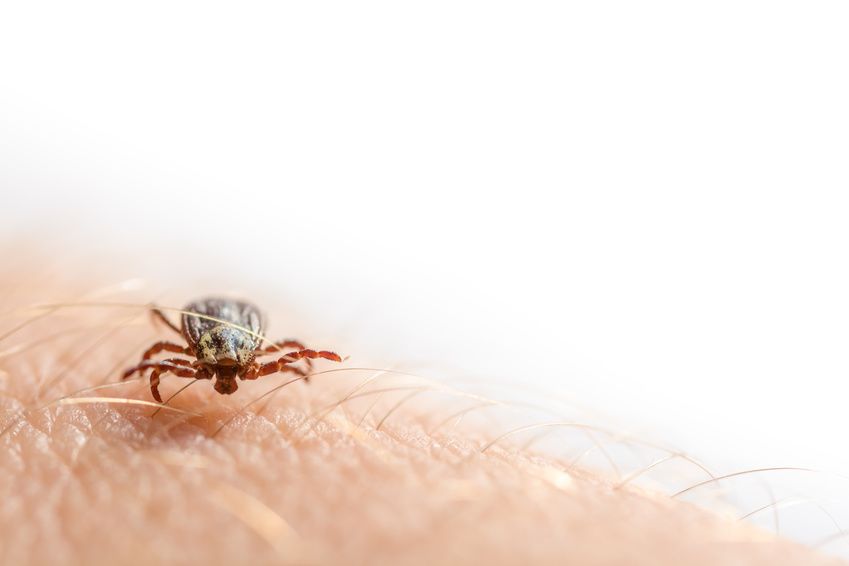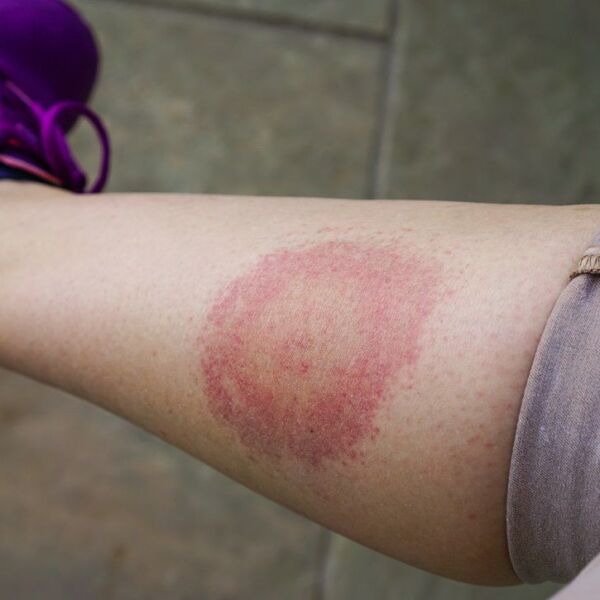Which diseases can be triggered by tick bites in Switzerland, how often do they occur and how dangerous are they?
In our latitudes, ticks can transmit various pathogens to humans. The most common are Lyme disease, caused by the bacterium B. burgdorferi, and early summer meningoencephalitis, caused by the TBE virus. Likewise, tularemia (rabbit plague) can be transmitted by ticks. Other diseases such as ehrlichiosis or rickettsiosis are rarities.
Lyme disease
According to estimates by the Federal Office of Public Health (FOPH), about 5-30% of ticks are infected with Borrelia throughout Switzerland and about 8,000-15,000 people become ill each year. Lyme disease manifests itself in very different ways (see below) and can be treated with antibiotic therapy – if diagnosed in time and treated adequately – can also be completely cured.
Early summer meningo encephalitis
Approximately 0.5% of all ticks in Switzerland are carriers of TBE viruses. The risk areas have expanded in recent years. Currently, all regions in Switzerland are affected except for Ticino and Geneva. In Switzerland, about 200-400 people per year contract TBE. There is no effective therapy against TBE. Only symptoms can be alleviated.
The rabbit plague
Rabbit plague is caused by the bacterium Francisella tularensis. Rabbit plague is very rare, but in recent years the number of cases in Switzerland has been increasing. Antibiotic therapy can be initiated if the diagnosis is appropriate.
What symptoms to look for after a tick bite and how to proceed if they occur?
Lyme disease
After a tick bite with transmission of borrelia, a migratory redness (erythema migrans) may occur a few days later. This is an inflammation of the skin in the area of the sting, which expands in a ring shape as it progresses and fades away centrally, similar to the image of a target. This skin manifestation must be distinguished from the local and harmless skin reaction, which typically occurs only just around the sting site and does not extend beyond 5 cm. In case of a skin reaction typical for Borrelia, a physician should be consulted in order to initiate antibiotic therapy. In rare cases, different symptoms may appear several weeks to years after transmission of Borrelia. Joint inflammation can occur, in this case the knee joint is usually affected. Further, for example, cardiac arrhythmia or inflammation of the nervous system may occur. In these cases, a physician should be consulted to diagnose or rule out Lyme disease. If confirmed, the physician will recommend antibiotic therapy.
Early summer meningo encephalitis
TBE typically occurs in two phases: The first phase lasts seven to fourteen days after the tick bite. During this time, flu-like symptoms such as headache, fever, fatigue or joint pain may occur, but they disappear completely after a few days. For a small proportion of patients, after a symptom-free interval, a second phase occurs in which the nervous system is affected: Meningitis or cerebral inflammation, paralysis of the facial nerves, arms or legs. Severe courses can lead to permanent damage or even death.
Rabbit plague
In hare fever, ulcers occur in the area of the bite site within about 10 days after the tick bite, with concomitant enlarged lymph nodes in the region of the bite site. If these symptoms are present, a physician should be consulted to initiate antibiotic therapy.

